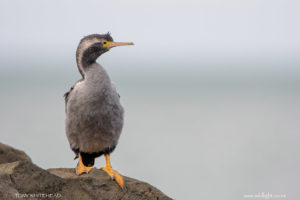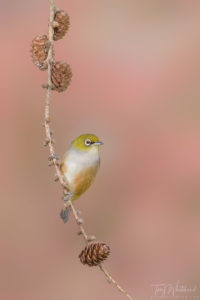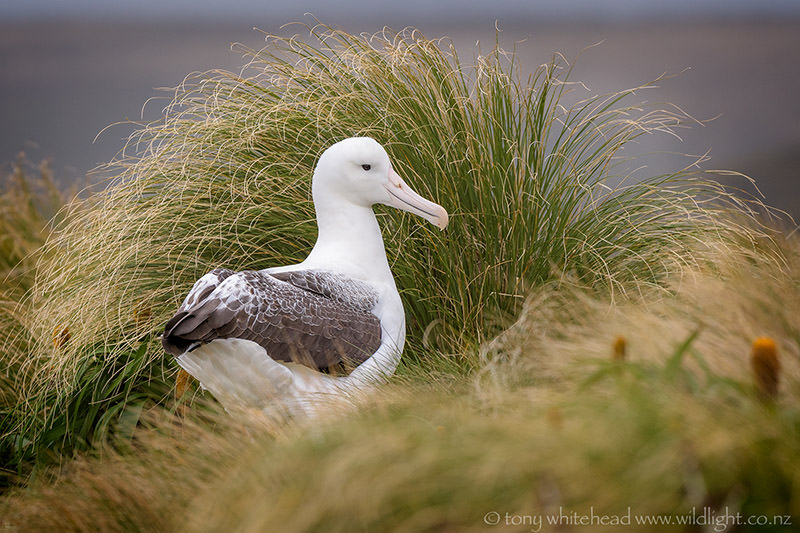
The Southern Royal Albatross of Campbell Island were what I had really been looking forward to seeing. Having first seen Northern Royal Albatross flying and nesting at Taiaroa Head on the Otago Peninsula in early 1990, I had been very impressed by these large and graceful birds. Subsequently seeing and photographing Royals and Wanderers, the two groups of great albatross, on a pelagic trip out of Kaikoura had left me with a desire to get up close to these birds on their breeding grounds, something that is not possible at the Otago mainland site. Seeing them fly, wheeling up in the wind and gliding low across the waves is mesmerising, but getting close is the only way to fully appreciate their size. They weigh approximately 9kg and have a wingspan of over 3m, making them the largest albatross, real gentle giants.
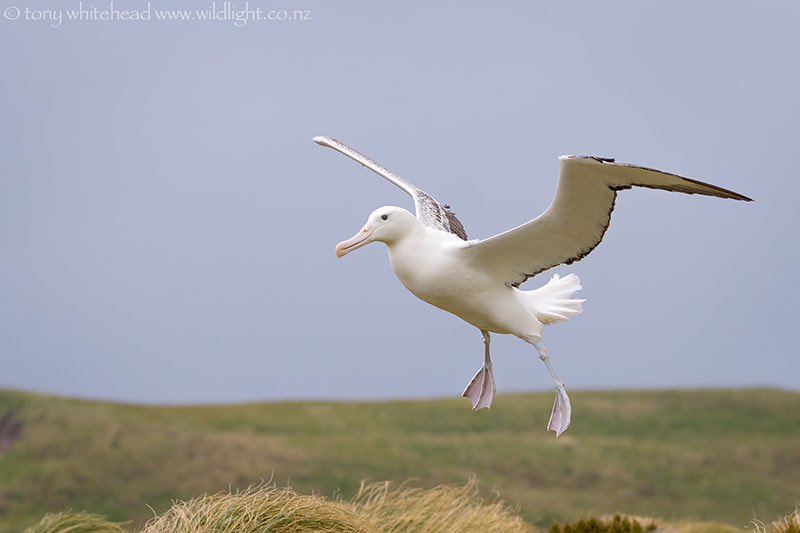
After spending the day feeding at sea they return in the afternoon and young birds form gamming groups displaying and sky calling. The purpose of this is for them to get to meet other young birds and decide on a partner to breed with. Young birds return to the island at 3-4 years after having spent time circumnavigating the world feeding.
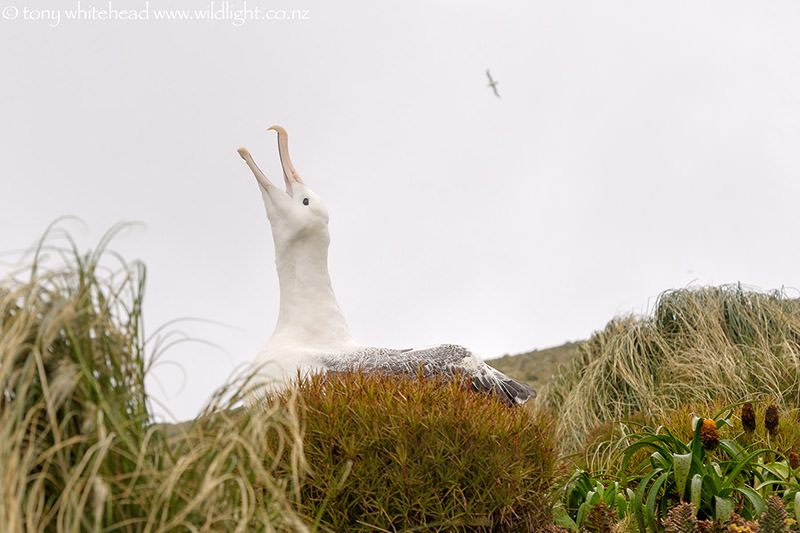
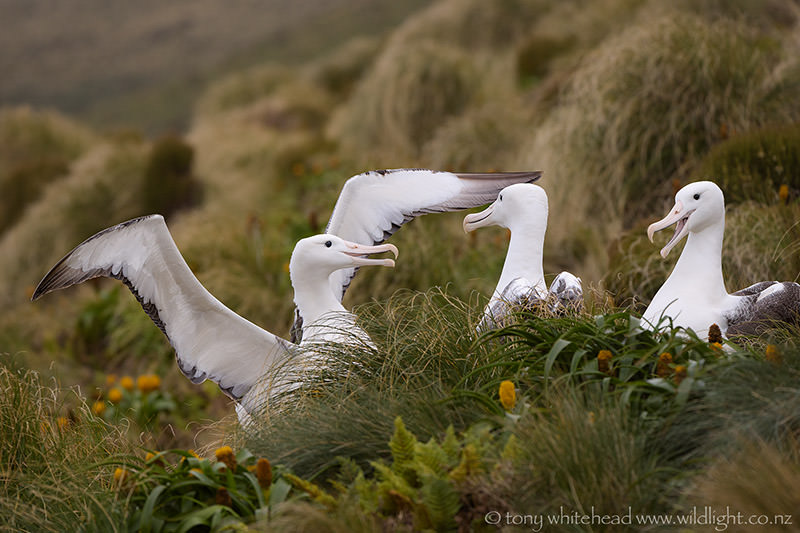
Breeding begins at 6-12 years of age when a mate is chosen. Southern Royal Albatross are monogamous with long term relationships but occasionally divorce. If successful, breeding occurs every second year as it takes almost a full year to raise the single chick. The single egg is laid in November to December and hatches in February, the chick fledging in October. Incubation and feeding is shared by both parents.
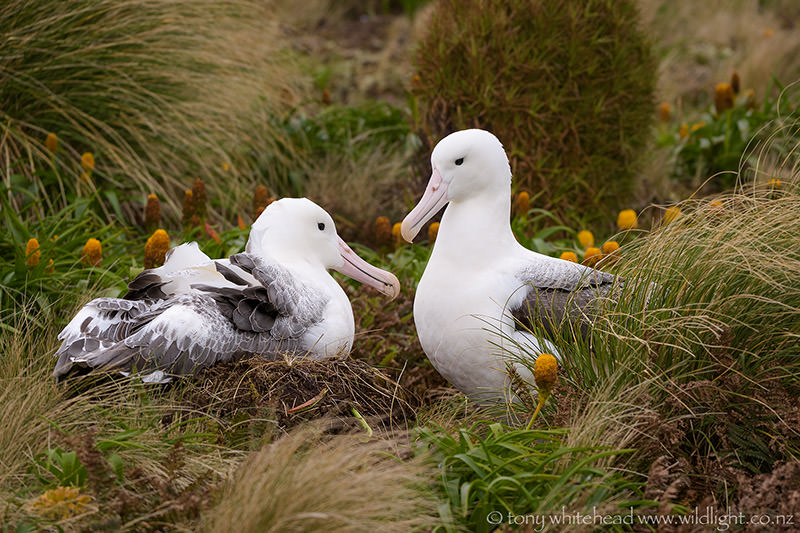
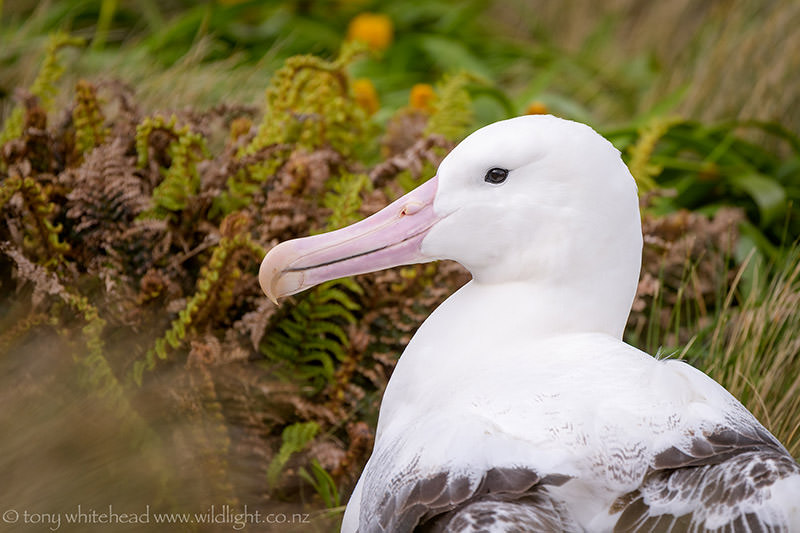
The majority of the world’s breeding population (8500 pairs) breed on Campbell Island with a minority (<100 pairs) on the Auckland Islands. Thier population was significantly depeleted during the period of human habitation and sheep farming on Campbell Island but has bounced back well since the eradication of pests. A dramatic reminder of the benefits that could come from the ambitious Predator Free NZ project. See this Department of Conservation page for more information on the initiative announced in the media this week.
For more information on Southern Royal Albatross see NZBirdsOnline.
All photos with Nikon D810 and Nikon 200-400mm f4 VR lens
